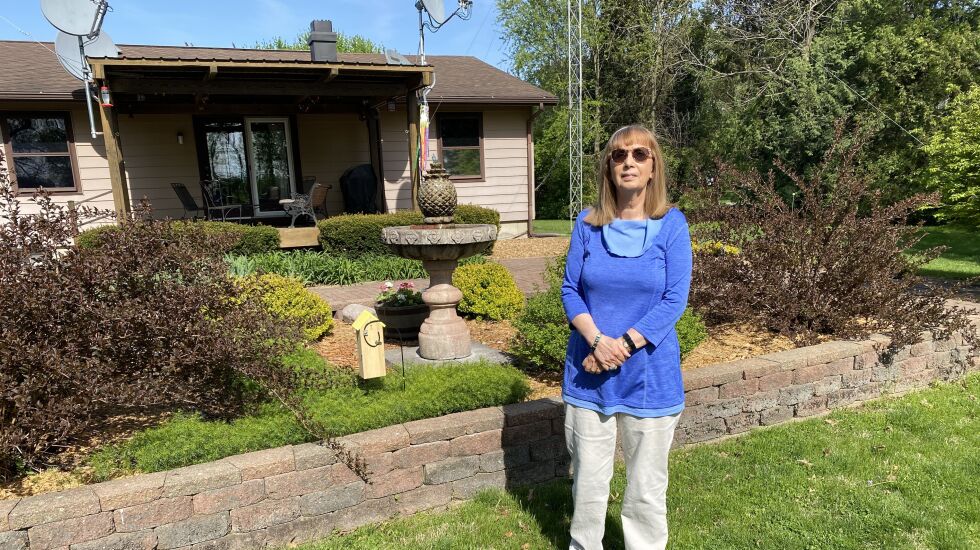
In December 2021, I was shocked to receive a letter from a company requesting an easement across my land to build a carbon dioxide pipeline. If I refused, the company, Navigator Heartland Greenway LLC, could seek to condemn the land and take it through eminent domain.
Many of my neighbors and I are fighting Navigator. We believe this industry is trying to gaslight us into believing that CO2 pipelines are always safe when they know these pipelines could threaten the lives of people like us.
Their entire argument apparently rests on the absurd premise that CO2 pipelines will never rupture, but they do. We must be safe if a rupture occurs. They don’t talk about that. CO2 pipeline ruptures can be catastrophic and potentially deadly.
In a recent Sun-Times letter to the editor, James R. Watson, executive director of the American Petroleum Institute Illinois, says CO2 pipelines are safe, but that’s only if they never rupture. They certainly are not safe when they do, as we know from the Satartia, Mississippi, CO2 pipeline rupture in 2020 that forced the evacuation of 200 people and hospitalized at least 45 people.
Watson cites oversight by the Department of Transportation’s Pipeline and Hazardous Materials Safety Administration (PHMSA) and the supposed safe history of CO2 pipelines, including the Archer Daniels Midland CO2 Decatur pipeline.
But the Decatur pipeline is an inadequate comparison to Navigator’s 1,342-mile-long pipeline with 21 pickup points proposed by a company that has never installed a CO2 pipeline. He also ignores that, according to PHMSA, an average of 273 “significant” U.S. pipeline ruptures occur annually, about five a week.
Most CO2 pipelines have been short, single point-to-point remote pipelines until now. Navigator’s would be the longest, most complicated CO2 pipeline in the world, yet routed next to populated areas like my housing subdivision in downstate Glenarm. It would run for miles alongside I-55 where it abuts Glenarm. A rupture here would overwhelm emergency services.
A life-threatening pipeline rupture in minutes
But in reality, we probably couldn’t be rescued anyway. Unlike the Satartia, Mississippi CO2 pipeline rupture that sent people to the hospital with seizures and unconsciousness but no deaths, we are not a mile away. Where I live, a rupture would probably reach life-threatening CO2 levels at our homes in minutes.
Industry consultant DNV conducted a CO2 pipeline rupture test. This rupture’s published data leads me to believe that at Navigator’s trunkline setback, we could be hit with life-threatening CO2 levels in mere minutes.
We could not escape in so few minutes, even with an all-electric car that can function without oxygen. We will be too busy having seizures, frostbitten eyes from the dry ice or simply asphyxiating. Now consider that a rupture here along the Navigator routes could release 15 to 40 times the CO2 volume as the test rupture.
We don’t stand a chance. We are in a sacrifice zone.
Distance is the only adequate protection if a rupture occurs, enough distance to prevent CO2 levels from reaching the Center for Disease Control & Prevention’s dangerous levels at our homes, through mandatory and inviolate safe setbacks. And distance from the pipeline is exactly what they refuse to give us.
And although only 13.4% of landowners have signed Navigator’s voluntary easements after almost a year, this private out-of-state company could take our land through eminent domain for hazardous substance transport from five states.
It will be over our dead bodies, quite possibly literally.
Kathleen Campbell, Ph.D., is a professor emeritus and distinguished scholar at the Southern Illinois University School of Medicine and is a co-founder of the Coalition to Stop CO2 Pipelines and Citizens Against Heartland Greenway Pipeline. This essay represents her own views and is not intended to represent the views of SIU.
The Sun-Times welcomes letters to the editor and op-eds. See our guidelines.
The views and opinions expressed by contributors are their own and do not necessarily reflect those of the Chicago Sun-Times or any of its affiliates.




!["[T]he First and Fifth Amendments Require ICE to Provide Information About the Whereabouts of a Detained Person"](https://images.inkl.com/s3/publisher/cover/212/reason-cover.png?w=600)


